Reader profile: Adrian
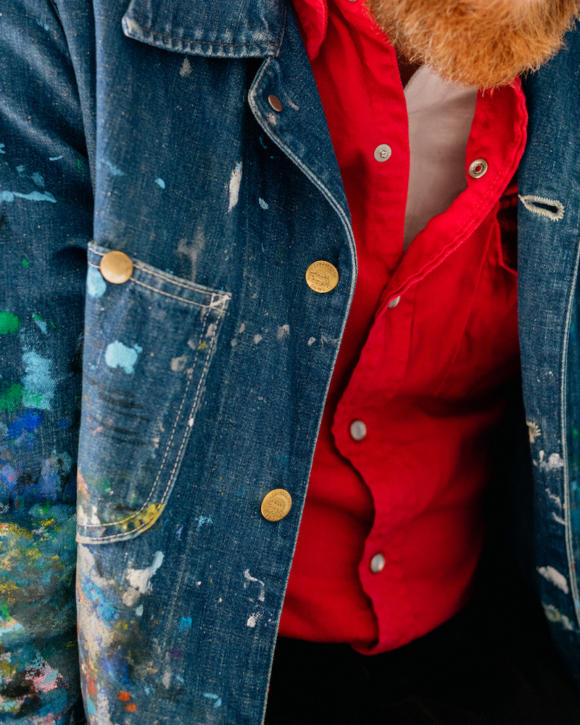
Adrian Hogan is a PS reader and an illustrator living in Tokyo. We met at Midori So, a charming Ivy-covered building that’s used as a shared workspace, set on top of a hill in a largely residential area but just a couple of blocks from the Nakameguro shopping district.
We got a tour of the building, which was built in the 1960s and seems largely unchanged. Little offices and communal areas run into each other, a whitewashed concrete room is used as a studio, and a flat roof affords wide views of the city - plus a disused swimming pool below.
Adrian spoke about his work for the likes of Nike, Starbucks and Uniqlo, and striking the right balance of clothing as an artist.
Outfit 1
- Linen shirt: Bryceland’s
- Vest: Phigvel
- Belt: Vintage
- Chinos: Bryceland’s
- Loafers: JM Weston
What are you working on at the moment?
An illustrated city guide for Uniqlo’s in-house magazine, Lifewear. It’s something they bring out twice a year and I usually do it each time in a different style. A lot of the editorial team at Uniqlo used to work for Popeye magazine, which is the magazine I’ve worked for the longest, so they use the same freelancers.
How do you get work as an illustrator - is it all word of mouth, or do you have to pitch?
One good job usually leads to another. The Japanese are quite relationship based, once they trust someone they tend to stick with you. Popeye has been pretty much doing the same style of magazine, the same 12 topics every year, since they started in the 1970s.
Clients also tend to throw everything at you once they trust you, which can be challenging. You’ll start with illustration, then it’s art direction, then a whole branding assignment for a store. It’s good, it pushes you.
How did you first get started in Japan?
I moved here from Australia in my twenties. I’d studied graphic design but it was really the drawing aspect I liked the most - not the fiddling around with fonts. The start was very fortuitous though - I thought I told you this story? Maybe not.
I was sketching people at a train station and there was this guy wearing a hat at an angle, looking very mysterious. So I drew him, and I thought I was doing it from quite far away, but when I got on the train he had clearly seen me because he approached and said excitedly, “Can I see the drawing, can I see it?”
Fortunately it was a good one, he took an interest and gave me his business card. He worked for Comptoir des Cotonniers - it’s actually a company of Uniqlo now, but was French then. That led to a job drawing portraits for Vogue’s Fashion Night Out over here.
From there I started working for magazines - I think I’ve drawn for most in Tokyo at this point - and for the store Tomorrowland. Aside from Popeye my biggest clients now are Starbucks and Uniqlo; I did some work for the Tokyo Olympics as well which got me a lot of attention.
I remember doing interviews on the radio about the Olympics and my mother back in Australia recording them - she’d send each one back to me and I hated the sound of my voice! But I guess everyone does.
Have many clients are menswear?
A few, though none at the start. I remember I had this one project for Nike where I had to draw Air Force Max sneakers, and I had to focus so closely on the lines, the proportions. Everyone knew the product but I didn’t. It was the same with drawing a herringbone jacket or other clothing for the first time - it’s such an education.
Is the outfit above typical for you? Thank you for the coffee by the way!
You’re welcome, it’s such a nice little kitchen. Yes this is the kind of thing I wear a lot in the summer, lightweight because it’s so hot in Tokyo. Unlike Melbourne where you can have four seasons in a day, Japan is quite consistent.
Outfit 2
- Chore coat: Bryceland’s
- Red sawtooth western shirt: Bryceland’s
- Cord trousers: Ambrosi
- Socks: Crockett & Jones
- Loafers: Alden
Have you always been into clothes?
Not really. I used to dress OK, probably because I had a good eye for colour, but I didn’t think about them much. It didn’t help I was a starving artist with zero budget, and being tall and thin meant not much fitted me in Japan. I actually had quite a lot of hand-me-downs from expats that had left.
But when I turned 30 - six years ago - I started to think about it more. I wanted to be taken a bit more seriously at work, but I also didn’t want to dress like a salaryman, so I needed to find a balance. The Japanese also focus on clothing a lot, it’s part of the language. They’re quite object-oriented and there’s a presumed knowledge of a lot of the culture of clothing. So there was catching up to do.
How did you start?
Bit by bit, talking to friends who were designers or finding store staff that were good. I’d do that poor-boy thing of talking to the staff in the expensive store about everything, getting all their advice, and then finding the same thing cheaper. The outfit above is a lot from Bryceland’s and other makers, but a few years ago I was wearing the same kind of clothes just from Uniqlo.
I also got into more traditional garments, like a Jin Bei, basically a Japanese cardigan. That was from a brand run by a friend called Hi Hi Hi. They do an ‘exhibition’ every season, like a lot of Japanese brands, which is basically an opportunity to do pre-order and even alter the fit. That was the first time I realised things could be custom made.
I also like a brand called Semoh, though they’re a bit more fashion and the clothes don’t work as well if you start to get a bit pudgier around the waist! And Phigvel for workwear, where that vest in the first outfit is from.
Sometimes I get clothes as part of work too - Tomorrowland paid me partly in credit in the early days, which allowed me to get my first suit.
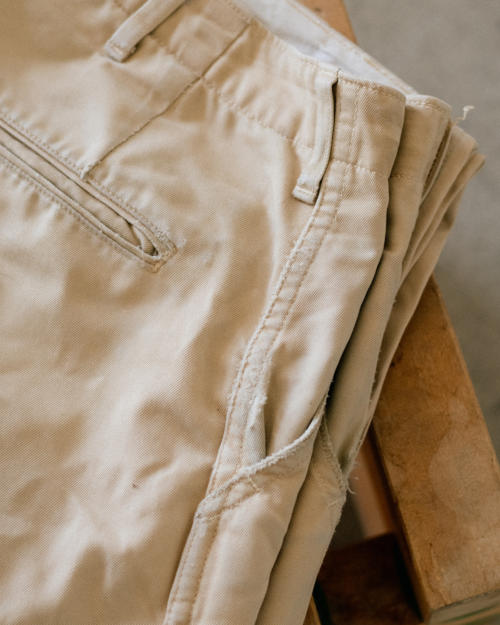
How did you first get to know Bryceland’s?
A magazine asked me to do a portrait of these various guys around Tokyo, and Ethan was one of them. I was kind of intrigued too - here’s this Australian, big guy and with a beard.
Ethan was really good at giving advice. It was so relaxed, you could just rock up there, have a coffee and a chat. He was particularly good on navigating that high/low aesthetic: it works really well for me as someone that wants to look like an artist but also professional, but it can be tricky to get right.
You clearly enjoy the Bryceland’s range now - those chinos look amazing and the chore looks like it’s been used for work a lot.
Yes, I’ve worn both so much. And it’s nice having a piece like that chore coat - I have a white one too. They get paint on when I’m doing mural work - I’m doing one for a hotel at the moment. But I’m also very aware of the impression they give, and that it’s the kind of look some clients want in an artist.
There’s always something a little performative in what we wear, perhaps particularly so in Japan.
Bryceland’s was why I first started reading your blog too, in 2018 maybe. Ethan had a copy of the book you did with Kamoshita on the cover and he told me about it.
Oh that’s nice, The Style Guide.
Yes. Although actually, in the past few years a lot of friends in Japan that have no interest in menswear have suddenly been asking me about it - I think because of Derek Guy, now he’s blown up on Twitter. So I send all of them to your site.
Outfit 3
- Glasses: Vintage
- Suit: Dalcuore
- Shirt: Bryceland’s
- Belt: Vintage
- Loafers: JM Weston
I know you designed the motif on this shirt - is it typical of your drawing style?
My drawing style actually varies quite a bit. Maybe it’s my background in graphic design - we were always taught there to adapt to what the client wants, to fit their branding.
Even when I moved to Japan and was doing more drawing, I’d have different styles. One quite realist, one simplistic, one more cartoony. Drawing is like a language really, and different types of language are better at expressing different things.
As a freelance artist is it helpful to have an identifiable style as well? To give yourself a form of branding?
Yes there’s always a balance there, and it’s easier to do it as you get more established. When I first came to Japan I did everything, even anime or manga, which I didn’t particularly like but it’s what you do when you’re trying to get started.
One thing that’s nice about Japan is that they appreciate things that are handmade, so they like illustration that is clearly done by hand, even if the colouring is done on computer, perhaps for speed.
One other thing I had to get used to in Japan is how much colour and tone of illustrating depends on the season. People are very aware of the weather: it will be a topic of regular conversation that we’re going into June and July, so it’s rainy season, so everyone had better look after their health.
That affects the tone of my work - it has to feel quite specific to the season. If I’m working on something now for Autumn/Winter, I have to think ahead and plan accordingly.
Was there a change in palette coming from Australia as well?
Yes, Tokyo is much greyer, but the country as a whole is much greener. That was a revelation to me; if you’re drawing a city or a background you have to be very aware of these things.
I was over in London during the Platinum Jubilee actually, and it was so foggy it felt like a Turner painting the whole time. I was thinking - he wasn’t original at all, he was just painting what it was actually like!
Thanks Adrian. That was fascinating but we’ll have to call it a day there. Hopefully see you again next time I’m in Japan.
That would be great, and pleased you managed to get out to Cow Books as well. See you then.
The Style Guide book is currently out of stock, but a second printing in coming later this year.


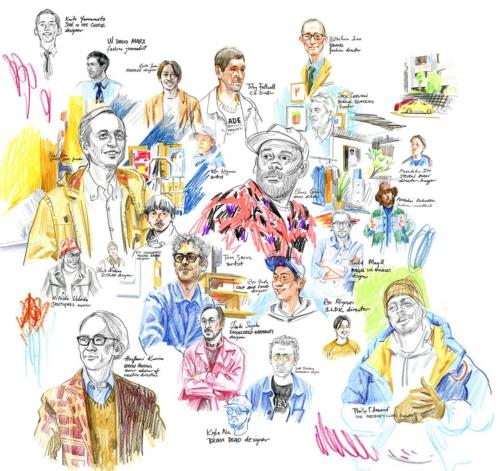
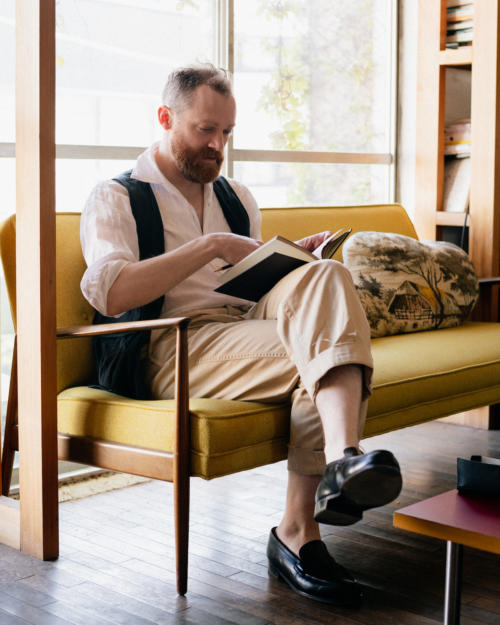
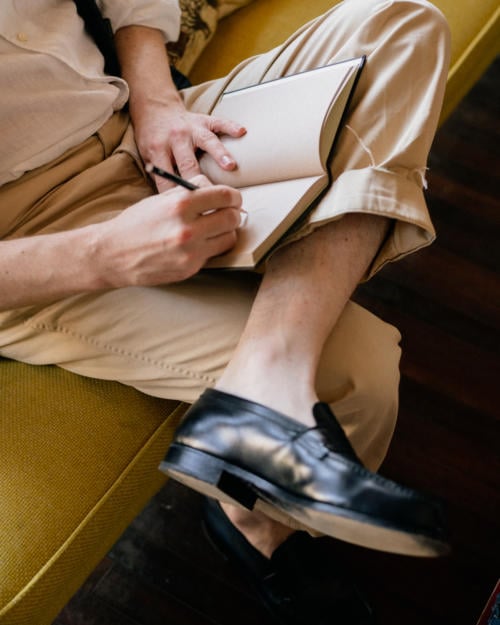
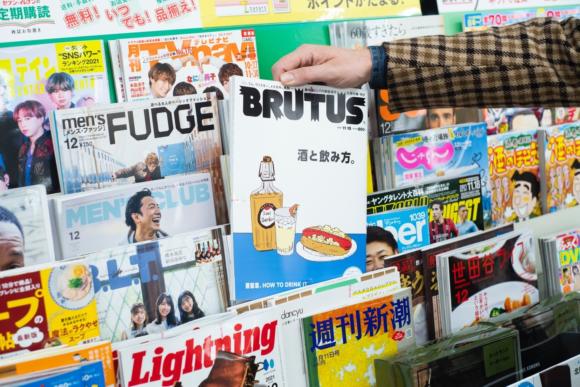
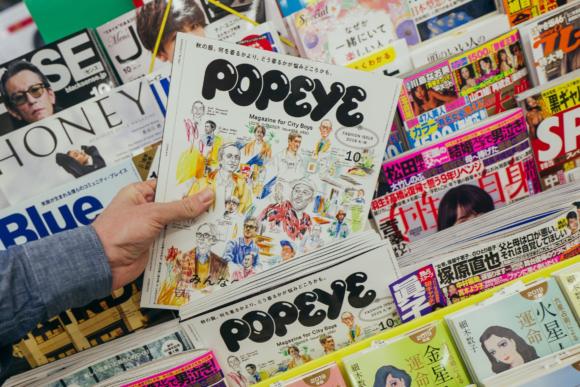
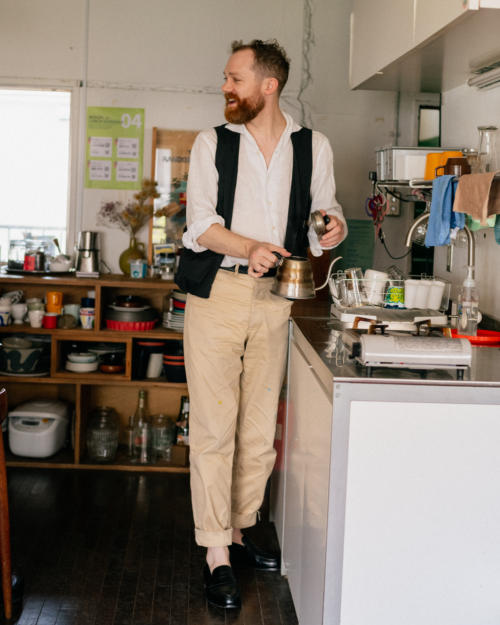
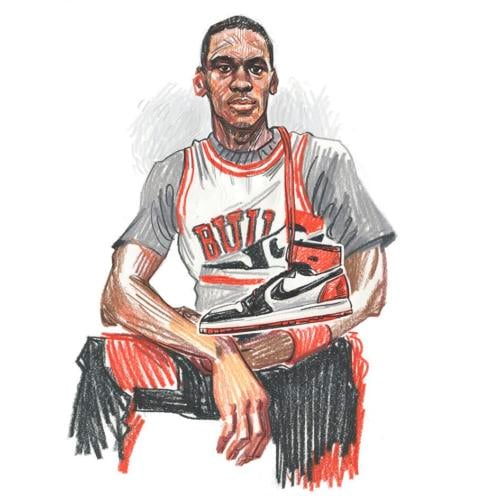
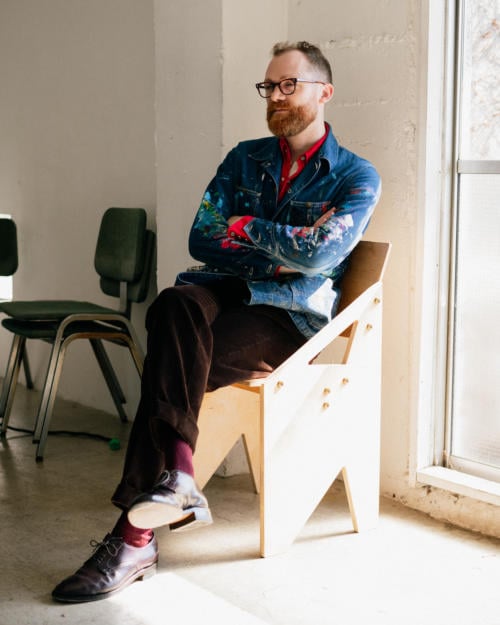
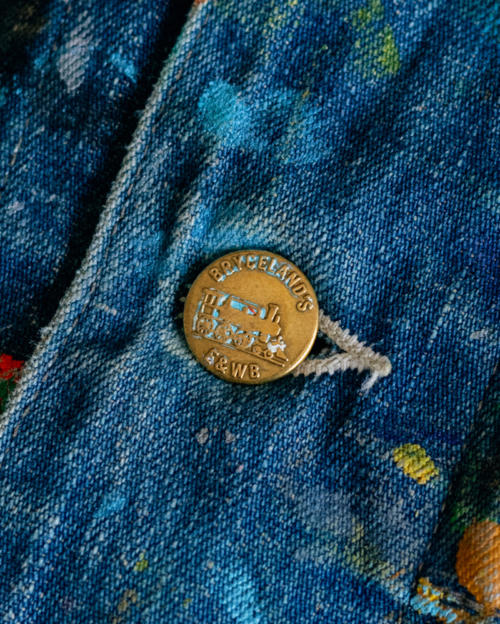
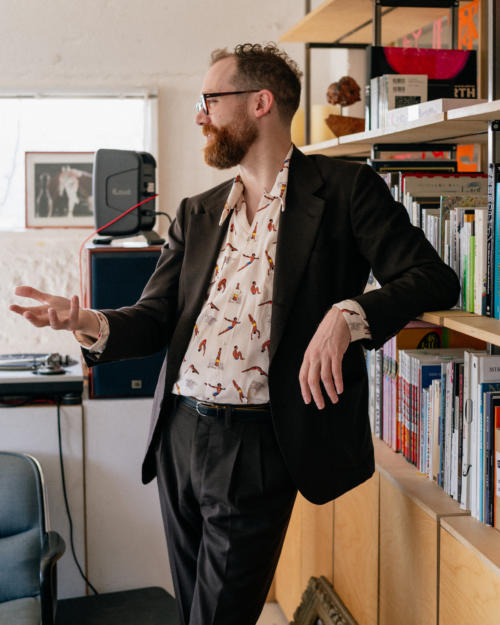
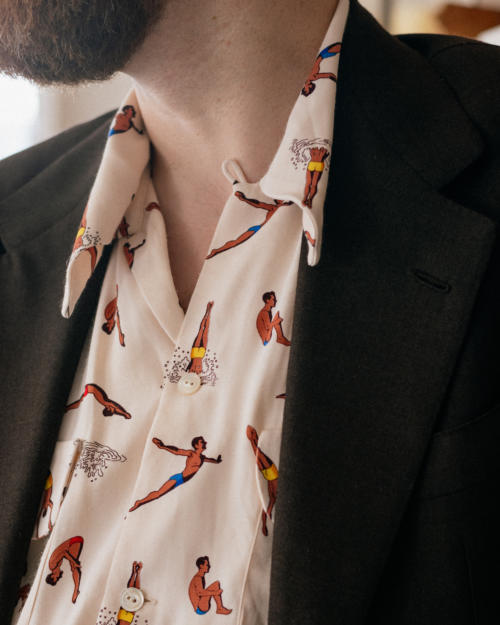
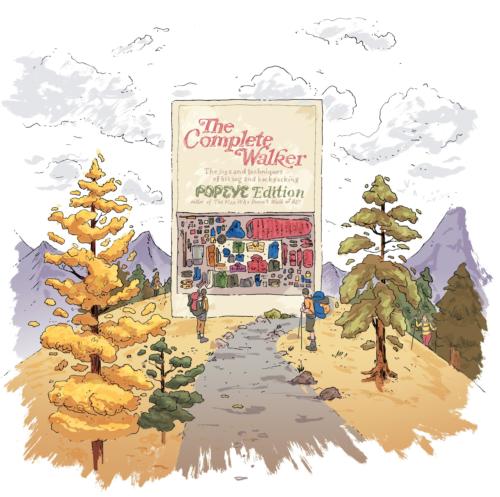
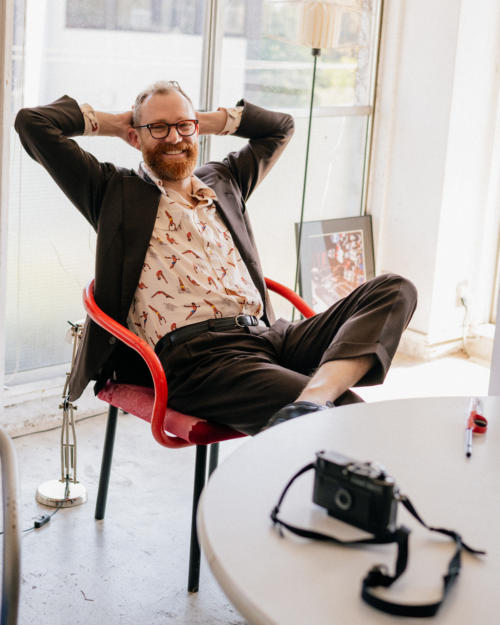
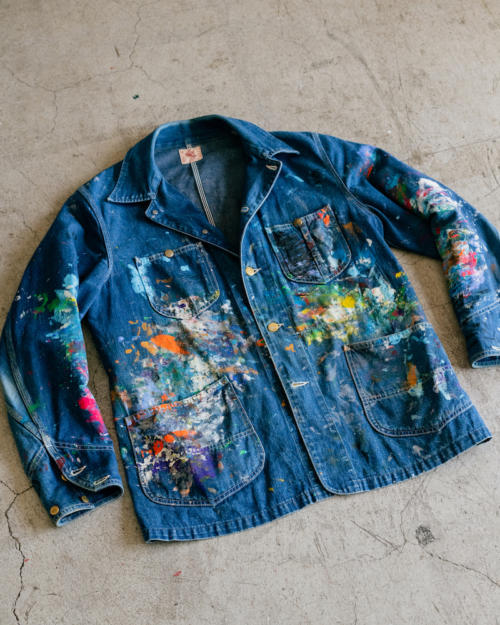
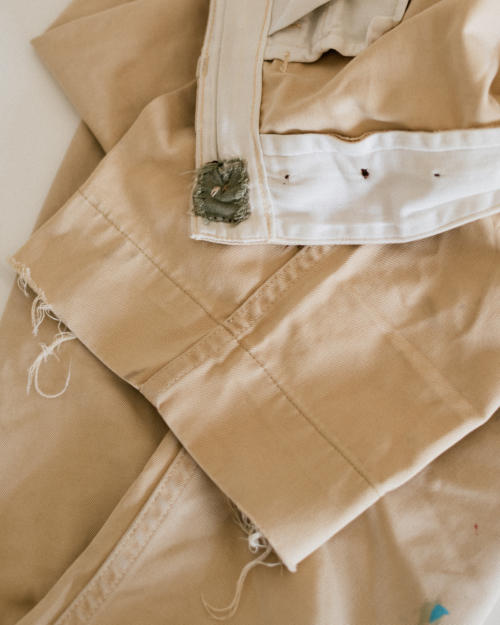


























Hello Simon, I’m loving these reader profiles more and more; Adrian has clearly cultivated a style that suits his personality and profession, and seems uniquely his – great stuff.
Interestingly, I was out and about running errands today and saw in a high street shop window a paint splattered chore coat being offered in some brand’s latest collection – like pre-distressed denim, it looked so contrived compared to the real thing!!
Interestingly, the paint splatters on the chore coat shown here also seem to have been quite contrived in their own, very similar way — if I understood Adrian correctly.
Hey Ajay,
No the paint splatters are genuine, Adrian’s point was that he wears it to meet clients or at events when he knows that’s the kind of look they are expecting
I loved that. Funny thing is I recoil from clothing sold new with paint spatters added but I loved that it happened naturally during the course of his work but then he was wearing it knowingly to meet his clients’ expectations of an artist’s appearance.
Wonderful interview btw, Simon. I’d have happily read ten times as long! Adrian seems a fascinating guy and I love his wardrobe too, definitely a few pieces in there I’d like to try myself!
I’ll try and make it to your jubilee at the end of the month, work and family permitting!
Thanks Tommy, it’s so nice when people like the experience and feeling of the interview like that.
And great, see you then!
Thank you for clarifying! I thought Adrian might have been implying that while the paint splatters indeed really got there while he was painting, they still didn’t get there by mere chance. Instead, he knew he wanted that particular “artist’s” look so he purposefully wore the coat (which is a fairly expensive one) during painting, knowing it would get the splatters on it. Perhaps, I read too far into this. Even if this were the case, I find Adrian’s general approach of being planned-out in regards to the impression he wants to make with his clothing interesting and a good one.
Thanks Ajay, that makes sense. That wasn’t the intention, no, though there would certainly be a degree of self-awareness with Adrian.
The coat is expensive, as are the chinos shown from Bryceland’s. The nice thing about Adrian’s wardrobe is how much all those things have been worn in, which of course is what they’re meant for. I included close-ups of the chinos for that reason – on the bottom image you can see the fraying at the bottom and the repair on the back of the waist button
I find that non-outerwear vests are a tricky thing to pull off. The admonishment from one character to another in the film Superbad comes to mind – “You look like Aladdin.”
And yet, Adrian seems to have succeeded here. While I didn’t get too close an impression of his vest from the photo, I wonder if the key is the ease of the other items that he is wearing-a linen shirt with a floppy collar and wide-legged chinos. They manage to make a pleasingly slouchy whole wherein a vest doesn’t appear too uptight or an affectation.
Absolutely, it’s a very casual thing, loose and easy
Nice article Simon, I am always impressed by the number of articles you are able to produce for us readers during your trips.
I have always liked the personal style of Menswear photographers, though this Profile has begun to spring my interest in the personal style of illustrators.
I like the serendipity of Adrian getting his break. There are so many similar stories which would leave the world poorer if they hadn’t happened – Mick and Keith meeting on a train in Dartford, Elton getting Bernie’s details from a publisher etc.
I too enjoy these profiles, their diversity and that they’re not exclusively focused on the clothing, but also the lifestyle behind them. Thanks Simon!
On seeing the opening image, I also assumed the paint splatters were contrived and was thrilled to learn they were not. Orslow has one that, if anyone is interested, can be seen on Totem Shop (a US site/shop). Adrian, perhaps I can sent you a new, blank chore coat and commission paint splatters?! 🙂
Off topic, regarding the Complete Walker image, can you please elaborate on its local significance if possible? I own and cherish a 30ish year old copy handed down from my dad and am duly curious.
All the best!
Thanks Paul. I don’t know on the image but I can certainly ask Adrian
Hi Paul,
Adrian here.
Sure, the Complete Walker was also popular in Japan with mountain hiking enthusiasts. I drew this for an article in Popeye Magazine’s camping edition awhile ago. It was a prominent feature discussing the essential tools and techniques required for various types of hikes. The illustration was a homage to the original guidebook. However, none of us involved were actually hikers at the time, so we tweaked the byline on the cover to reflect this. The editors refer to this type of illustration as a “tobira” or gateway illustration, as it was a full-page image that led the reader into the rest of the magazine.
Thank you for the feedback Adrian. So glad to hear interest in the Complete Walker lives on and very much enjoy your illustrations.
Best,
Paul
Great interview and style! That chore coat is gorgeous! Perhaps, though, you could feature some men without beards for a change (haha)? I think the beard trend has come and gone.
Thank God. I’ve had one for 20 years and so sick of people thinking I was trying to be trendy! (It was, rather, because my hair was all disappearing)
Hi Simon,
Thanks for this interview with Adrian. I’ve really enjoyed reading it. By the way, the shoes in outfit 2 are not JM Weston loafers.
John
Thanks John. You mean the outfit with the denim chore? It says they’re Alden, but you’re certainly right they’re not loafers!
Lovely profile Simon. I love these more idiosyncratic dressers. The motif on his shirt is great, seems to suit his personality. But as a fellow tall, lanky Aussie who has tried shopping in Japan on several trips, I’m honestly surprised he was able to find so much that fit him.
Thanks Paul.
He did find it very hard – did you see that part of the interview?
It’s no coincidence much of this is from a brand by a non-Japanese like Brycelands
Simon,
Adrian better get a move on. In addition to a paint-spattered Saville Row topcoat, and a chauffeur-driven Rolls-Royce, Lucien Freud also had a minimum of 15 children (14 illegitimate). Cheers
Hello, looking back at the readership survey it stated the average age was 42 (3 years ago). I’d quite like to see some reader profiles from the further ends of the distribution. So a younger man (or woman) who hasn’t quite exchanged fashion for a more classic style at one end. Then at the other end someone later in life who is thoroughly comfortable with himself and not bothered by others opinions.
Thanks.
Thanks Misbah. Did Mattia and Patrick fit into those moulds?
Yes, Mattia is definitely in that category. Patrick certainly shows more adventure while staying within the classic framework. From the Reader Profiles Tim, Andy & Simon, to my mind, evoke a more carefree, relaxed appearance.
So not that you haven’t covered but good to see more examples from those areas.
Ah I see
A nice interview, Simon. I liked the way you wove together his clothes style with his work and little insights into Japanese culture. Interesting how his style is a combination of what he likes and what his clients expect of an artist like him.
Love how we get to know the readers wearing the clothes: their sartorial, as well as their life’s journeys. How they got to this point at which they speak to PS. Had an affinity with Adrian immediately because of his work for magazines, some of which I collect, read and sell. He looks happy and relaxed in his clothes too and it shows in the photographs. It also adds more context that it was shot where he works and the illustration throughout with his sketches. Also we are introduced to some new labels worth researching. Great style and that striking red shirt made me realise I actually don’t have one and it could work for me.
Very nice dark brown suit from Dalcuore’s featured in this article. May I know which fabric it is? It looks very much like the dark brown one in the crispaire bunch.
I’ll ask Adrian, Steve
Hi Steve, yes that’s the one!
Though I don’t know the fabric code off hand, I’m afraid.
Hi Simon what did you make of the bryceland linen shirt that Adrian was wearing? I have been contemplating getting it for a while but held back because the collar and shirt seemed very formal (once-piece and relatively spread/cut-away and clean in the front with no chest pocket). Do you think it pairs well with casual bottoms like denim and military fatigues?
I don’t know I’m afraid Shem, I don’t think I’ve tried it